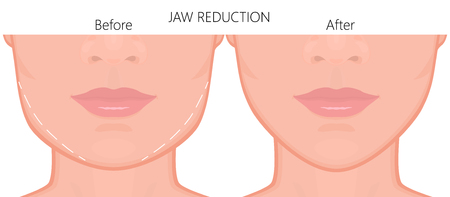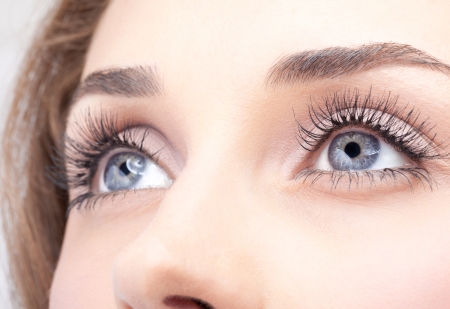1. Understanding Under-Eye Concerns
The under-eye area is one of the most delicate parts of the face, and its often where signs of aging, fatigue, and lifestyle habits first become noticeable. Many people struggle with issues like dark circles, hollowness, and fine lines, which can make them look older or more tired than they actually are. But what causes these concerns? Lets break it down.
Common Under-Eye Issues and Their Causes
| Issue | Description | Main Causes |
|---|---|---|
| Dark Circles | Shadowing or discoloration under the eyes that makes you look tired. | Lack of sleep, genetics, thin skin, pigmentation, poor circulation. |
| Hollowness | A sunken appearance under the eyes that creates a tired or aged look. | Loss of fat and collagen, genetics, aging. |
| Fine Lines & Wrinkles | Tiny creases around the eyes that develop over time. | Aging, sun exposure, dehydration, repetitive facial movements. |
The Role of Skin Structure in Under-Eye Concerns
The skin under your eyes is much thinner than the rest of your face, making it more prone to showing changes related to aging and lifestyle. Because this area has fewer oil glands and less collagen support, its more susceptible to dryness, sagging, and fine lines. Additionally, blood vessels beneath the skin can become more visible due to thinning skin or poor circulation, contributing to dark circles.
Lifestyle Factors That Affect Your Under-Eyes
Your daily habits play a big role in how your under-eye area looks. Lack of sleep, dehydration, excessive sun exposure, and even diet can impact the appearance of your eyes. Genetics also play a significant role—some people are naturally predisposed to dark circles or hollowness due to their bone structure or pigmentation levels.
The Challenge of Treating Under-Eye Concerns
Treating under-eye issues isn’t always straightforward. While skincare products claim to address these concerns, they have limitations due to how deep they can penetrate the skin. This is where treatments like dermal fillers come into play—but before diving into those options, its essential to understand what topical products can and cannot do for your under-eye area.
2. How Skincare Works for Under-Eye Concerns
When it comes to addressing under-eye concerns, skincare products like eye creams and serums play a significant role. These topical treatments are designed to hydrate, brighten, and smooth the delicate skin around the eyes. However, they have limitations when it comes to more pronounced concerns like deep hollows or volume loss.
The Role of Eye Creams and Serums
Eye creams and serums are formulated with active ingredients that target common issues such as dryness, fine lines, puffiness, and dark circles. Many contain ingredients like hyaluronic acid for hydration, caffeine for de-puffing, and peptides for collagen support.
Common Ingredients in Under-Eye Skincare
| Ingredient | Benefit |
|---|---|
| Hyaluronic Acid | Hydrates and plumps the skin |
| Caffeine | Reduces puffiness by constricting blood vessels |
| Peptides | Supports collagen production to improve firmness |
| Vitamin C | Brightens dark circles and evens out skin tone |
| Retinol | Smooths fine lines by increasing cell turnover |
The Limitations of Topical Products
While these ingredients offer benefits, topical skincare has its limits. Because creams and serums work on the surface of the skin, they cannot restore lost volume or significantly reduce deep hollows under the eyes. For concerns related to structural changes—such as fat loss or pronounced tear troughs—injectable fillers may be a more effective solution.
Skincare vs. Fillers: What Each Can Address
| Treatment Type | Main Benefits | Main Limitations |
|---|---|---|
| Topical Skincare (Eye Creams & Serums) | – Hydrates & nourishes – Reduces puffiness – Brightens dark circles – Minimizes fine lines over time |
– Cannot replace lost volume – Limited impact on deep-set hollows – Requires long-term use for visible results |
| Under-Eye Fillers (Injectables) | – Restores lost volume – Smooths deep hollows – Provides immediate results – Long-lasting effects (6-18 months) |
– Requires professional treatment – Potential for swelling or bruising – Not permanent; needs maintenance |
The Bottom Line on Skincare for Under-Eyes
If your main concerns are mild puffiness, dehydration, or early signs of aging, a well-formulated eye cream can be a great addition to your routine. However, if youre dealing with significant volume loss or deep tear troughs, topical products alone won’t be enough to achieve dramatic improvements.

3. What Under-Eye Fillers Can Do
While skincare products can help hydrate and brighten the under-eye area, they have limitations when it comes to addressing volume loss and deep shadows. This is where dermal fillers come in. Under-eye fillers are specifically designed to restore lost volume, reduce hollowness, and create a smoother appearance.
How Do Dermal Fillers Work?
Dermal fillers used for the under-eye area are typically made of hyaluronic acid (HA), a substance that naturally occurs in the skin and helps retain moisture. When injected by a skilled provider, HA fillers add subtle volume, lifting the hollow areas and diminishing dark shadows caused by depressions under the eyes.
Benefits of Under-Eye Fillers
Unlike topical skincare products, which primarily work on the skin’s surface, fillers address structural concerns beneath the skin. Here’s a comparison of what fillers can do versus what skincare can achieve:
| Concern | Under-Eye Fillers | Skincare Products |
|---|---|---|
| Volume Loss | Adds volume to sunken areas | Cannot restore lost volume |
| Dark Shadows | Lifts hollows to reduce shadowing | Mild brightening effects but no structural change |
| Smoothness | Evens out depressions for a seamless look | Hydrates and softens fine lines but doesn’t fill hollows |
| Puffiness | No effect on fluid-related puffiness | Might temporarily reduce mild puffiness with ingredients like caffeine |
The Effectiveness of Fillers for a Refreshed Look
The results of under-eye filler treatments can be seen almost immediately, with full effects appearing within a couple of weeks as the product settles. The treatment is minimally invasive and can last anywhere from 6 months to over a year, depending on individual factors such as metabolism and lifestyle.
A Personalized Approach Is Key
The success of under-eye fillers depends on proper technique and choosing the right type of filler for each person’s unique anatomy. Consulting with an experienced injector ensures natural-looking results without overfilling or unwanted side effects.
4. The Limitations of Skincare Alone
Topical skincare products play a crucial role in maintaining healthy, hydrated skin. However, when it comes to addressing more advanced concerns like deep hollows, significant volume loss, or pronounced dark circles under the eyes, creams and serums have their limitations.
Why Skincare Can’t Replace Fillers
Under-eye fillers and topical skincare work in entirely different ways. While eye creams and serums focus on improving hydration, boosting collagen production, and brightening the skin’s surface, fillers physically restore lost volume beneath the skin. Here’s a quick comparison:
| Aspect | Topical Skincare | Under-Eye Fillers |
|---|---|---|
| Main Function | Hydrates and improves skin texture | Adds volume and smooths hollow areas |
| Effectiveness for Dark Circles | Mild to moderate improvement | Significant improvement if caused by volume loss |
| Treatment Depth | Affects only the surface layers of the skin | Treats deeper structural concerns under the skin |
| Time to See Results | Takes weeks to months with consistent use | Immediate results (with some swelling or bruising initially) |
| Longevity of Results | Requires daily application to maintain effects | Lasts several months to over a year depending on the filler used |
The Biggest Limitations of Skincare Alone
If your under-eye concerns are mild—such as occasional puffiness or slight dryness—skincare products can be beneficial. But for those dealing with persistent hollowing or deep-set dark circles caused by volume loss, no amount of eye cream can replace what fillers do.
Lack of Volume Restoration
The biggest drawback of relying on topical treatments is that they cannot restore lost volume. Under-eye hollows are often due to fat pad depletion or genetics, which no cream can reverse.
Ineffectiveness for Structural Issues
If your dark circles are caused by shadowing due to deep tear troughs rather than pigmentation, even the best brightening ingredients won’t make a visible difference. Fillers help by lifting the area and reducing shadows.
Slower and Less Noticeable Results
Mild improvements from skincare take time and require consistent use. In contrast, fillers provide instant results with long-lasting effects.
The Bottom Line on Skincare vs. Fillers
While skincare remains an essential part of any routine, it has its limits—especially for those looking to address significant under-eye concerns. If you’re struggling with stubborn hollows or deep-set dark circles, fillers may be the more effective solution.
5. Finding the Right Solution for You
When it comes to under-eye concerns, choosing between skincare and fillers depends on your specific needs and expectations. While topical products offer gradual improvements, fillers provide immediate volume restoration. In some cases, a combination of both might be the best approach.
When to Choose Skincare
Skincare is a great option if your main concerns are mild puffiness, fine lines, or early signs of aging. Ingredients like retinol, peptides, and hyaluronic acid can help improve skin texture and hydration over time.
Best for:
- Early signs of aging
- Mild dark circles caused by pigmentation
- Hydration and skin barrier support
- Preventative care
When to Consider Fillers
If you have hollowing under the eyes that creates a tired appearance, fillers can restore lost volume instantly. They are particularly effective for addressing deep tear troughs that cannot be significantly improved with skincare alone.
Best for:
- Loss of volume under the eyes
- Deep tear troughs
- A sunken or tired look
- No significant improvement from skincare alone
The Power of a Combination Approach
For many individuals, combining skincare and fillers offers the best results. Fillers address structural concerns, while skincare maintains skin health and prolongs results.
| Skincare | Fillers | |
|---|---|---|
| Main Benefit | Nourishes and improves skin texture over time | Adds volume and reduces hollowness instantly |
| Best For | Mild concerns, prevention, hydration | Significant volume loss, deep tear troughs |
| Time to See Results | Weeks to months with consistent use | Immediate (with minor swelling possible) |
| Sustainability | Ongoing use required for maintenance | Lasts 6-18 months depending on filler type |
| Ideal Approach | A good foundation for long-term skin health | A quick solution for noticeable under-eye hollows |
Your Personalized Plan
The right choice depends on your goals. If you want subtle improvements and long-term care, skincare is essential. If you’re looking for immediate correction of hollow areas, fillers may be the way to go. Many people benefit from using both strategies together for optimal under-eye rejuvenation.


